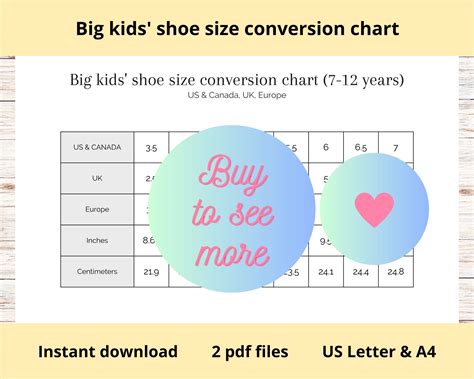5 Tips Mens Shoe Sizes

When it comes to men’s shoe sizes, finding the perfect fit can be a daunting task. With various sizing systems and brands offering different fits, it’s easy to get confused. However, with the right knowledge, you can ensure that your shoes fit comfortably and provide the necessary support for your feet. Here are five tips to help you navigate the world of men’s shoe sizes:
1. Understand the Sizing Systems
Men’s shoe sizes can vary significantly depending on the country and brand. The most common sizing systems are US, UK, and European sizes. Understanding the differences between these systems can help you choose the right size when shopping internationally or from foreign brands. For instance, a US size 10 is equivalent to a UK size 9 and a European size 44. Familiarizing yourself with these conversions can save you from the hassle of returns and exchanges due to sizing issues.
2. Measure Your Feet
The best way to ensure a perfect fit is by measuring your feet. You can do this at home with a ruler or at a shoe store with a Brannock device. When measuring at home, place a piece of paper on the floor and trace the outline of your foot. Measure the length from the back of the heel to the tip of the longest toe. Compare this measurement with the brand’s size chart to find your size. Remember, it’s also important to consider the width of your feet, as some brands offer narrow, standard, and wide options.
3. Consider the Type of Shoe
Different types of shoes have varying fits. For example, running shoes tend to have a more snug fit around the heel and a roomier toe box to accommodate the natural movement of your feet during exercise. On the other hand, dress shoes often have a more streamlined fit and may require a slightly smaller size due to the more rigid material. Understanding the specific fit characteristics of the shoe type you’re interested in can help you make a more informed size choice.
4. Try Them On
If possible, always try on shoes before buying them. This is especially true for dress shoes or any style that you haven’t purchased before. The material, design, and brand can all impact how the shoe fits. When trying on shoes, wear the same type of socks you plan to wear with them, as this can affect the fit. Also, try them on later in the day, as feet tend to swell throughout the day. This ensures that the shoes will be comfortable at all times.
5. Break Them In
Sometimes, even with the right size, new shoes can feel stiff or uncomfortable. This is where breaking them in comes into play. Start by wearing them around the house for short periods to gradually soften the material and mold the shoe to your foot. For leather shoes, you can use a shoe stretcher or apply a leather conditioner to speed up the process. Remember, breaking in shoes takes time, so be patient and avoid wearing them for long periods initially.
One of the most underrated tips for finding the perfect shoe size is to consider the time of day when you try them on. Feet naturally swell as the day progresses, so trying on shoes in the morning might result in a slightly tighter fit by the evening. Always try to fit shoes later in the day for the most accurate size.
Step-by-Step Guide to Measuring Your Feet at Home

- Prepare Your Materials: You'll need a piece of paper larger than your foot, a pencil, and a ruler or measuring tape.
- Place the Paper on the Floor: Ensure the paper is flat and on a hard, even surface.
- Trace Your Foot: Place your foot on the paper with your heel against a straight edge (like a wall) and trace around your foot with the pencil. Make sure the pencil is straight and in contact with your foot as you draw.
- Measure the Length: Use the ruler or measuring tape to measure the length from the back of the heel to the tip of your longest toe. This is your foot length.
- Measure the Width: Measure across the widest part of your foot, usually just below the toes, to determine your foot width.
- Compare with Size Charts: Use the length and width measurements to compare with the sizing charts provided by shoe manufacturers. Keep in mind that different brands and models may have slightly different sizing, so it's a good idea to check the specific chart for the shoe you're considering.
In conclusion, finding the right men’s shoe size involves understanding the different sizing systems, measuring your feet accurately, considering the type of shoe, trying them on, and breaking them in. By following these tips and being patient with the process, you can find shoes that fit comfortably and provide the support your feet need.
How do I know if my shoes fit properly?
+Properly fitting shoes should feel comfortable from the start, with enough room in the toe box to wiggle your toes and a snug, not tight, fit around the heel. The arch should align with the shoe’s arch support, and there should be minimal slipping at the heel when walking.
Why do shoe sizes vary between brands?
+Shoe sizes can vary between brands due to differences in manufacturing processes, materials, and design philosophies. Each brand might have its unique last (the shape around which the shoe is constructed), leading to variations in fit even among the same size across different brands.
How often should I measure my feet?
+It’s recommended to measure your feet at least once a year, as foot size can change due to various factors such as weight gain or loss, aging, or certain medical conditions. Also, consider measuring your feet after significant changes in your lifestyle or health.


